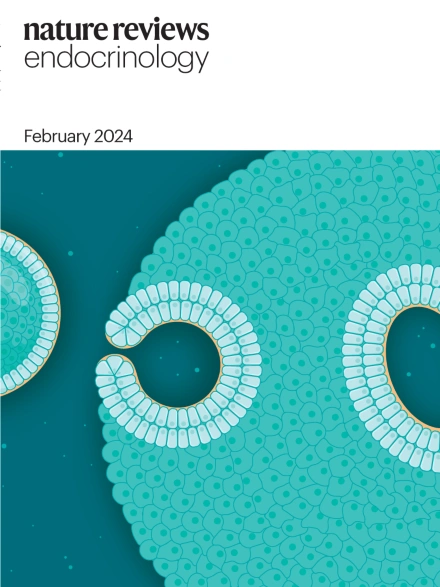The enduring relevance of the Randle cycle
IF 40
1区 医学
Q1 ENDOCRINOLOGY & METABOLISM
引用次数: 0
兰德尔循环的持久相关性
在糖尿病患者中,心脏的代谢特征是脂肪酸的过度使用和葡萄糖的氧化减少。这些变化与心脏效率降低、易受缺血性损伤和心力衰竭风险增加有关。有趣的是,即使在心脏胰岛素信号没有任何损伤的情况下,这些变化也被观察到,这表明了直接底物竞争的作用——这一概念最早是由菲利普·兰德尔和他的同事在1963年的《柳叶刀》杂志上发表的一篇论文中描述的。在这篇具有里程碑意义的论文中,脂肪酸和葡萄糖在ATP生成过程中的相互底物竞争原理奠定了我们目前对心脏代谢生理学和代谢应激反应的理解的基础。Randle等人的研究表明,在分离的心脏和隔膜制剂中提供外源性脂肪酸,或在脂肪组织脂解后增加非酯化脂肪酸的循环水平,可促进脂肪酸氧化(FAO),并抑制独立于激素控制的葡萄糖利用。作者提出抑制丙酮酸脱氢酶(PDH);线粒体酶催化丙酮酸转化为乙酰辅酶a(来自FAO的乙酰辅酶a)是脂肪酸抑制葡萄糖利用的主要机制。相反,当葡萄糖丰富时,脂肪组织对葡萄糖的利用会抑制脂肪分解和非酯化脂肪酸的释放,这导致氧化组织对脂肪酸的利用减少,从而完成“葡萄糖-脂肪酸循环”(现在更广为人知的是Randle循环)。
本文章由计算机程序翻译,如有差异,请以英文原文为准。
求助全文
约1分钟内获得全文
求助全文
来源期刊

Nature Reviews Endocrinology
医学-内分泌学与代谢
CiteScore
42.00
自引率
0.70%
发文量
158
审稿时长
6-12 weeks
期刊介绍:
Nature Reviews Endocrinology aspires to be the foremost platform for reviews and commentaries catering to the scientific communities it serves. The journal aims to publish articles characterized by authority, accessibility, and clarity, enhanced with easily understandable figures, tables, and other visual aids. The goal is to offer an unparalleled service to authors, referees, and readers, striving to maximize the usefulness and impact of each article. Nature Reviews Endocrinology publishes Research Highlights, Comments, News & Views, Reviews, Consensus Statements, and Perspectives relevant to researchers and clinicians in the fields of endocrinology and metabolism. Its broad scope ensures that the work it publishes reaches the widest possible audience.
 求助内容:
求助内容: 应助结果提醒方式:
应助结果提醒方式:


